#Venetian landmarks
Explore tagged Tumblr posts
Text

Francesco Guardi, View of the Rialto Bridge, Venice
#francesco guardi#PowerPoint slide#Rialto#Venetian landmarks#vedute di venezia#Laguna di Venezia#XVIII century#diciottesimo secolo#Italian artworks
0 notes
Photo

Strolling through a flooded St. Mark's Square feels surreal, with Venetians wading through the water like it's just another day. The historic architecture stands unfazed, a testament to Venice's timeless charm amid nature's whims.
#Venice#St. Mark's Square#Flood#Venetians#Italian Architecture#Historic Landmarks#High Water#Acqua Alta#Travel Italy#Surreal Scenery#City on Water#Urban Flooding#Resilience#Nature's Power#Timeless Charm
47 notes
·
View notes
Text




















The Venetian Las Vegas opened on May 3, 1999.
#The Venetian Las Vegas#opened#3 May 1999#25th anniversary#US history#3355 South Las Vegas Boulevard#Paradise#Nevada#summer 2022#USA#interior#exterior#replica#tourist attraction#landmark#cityscape#vacation#travel#Western USA#KlingStubbins#original photography#Rialto Bridge#water#St. Mark's Campanile#Grand Canal Shoppes#Palazzo Ducale#architecture
3 notes
·
View notes
Photo

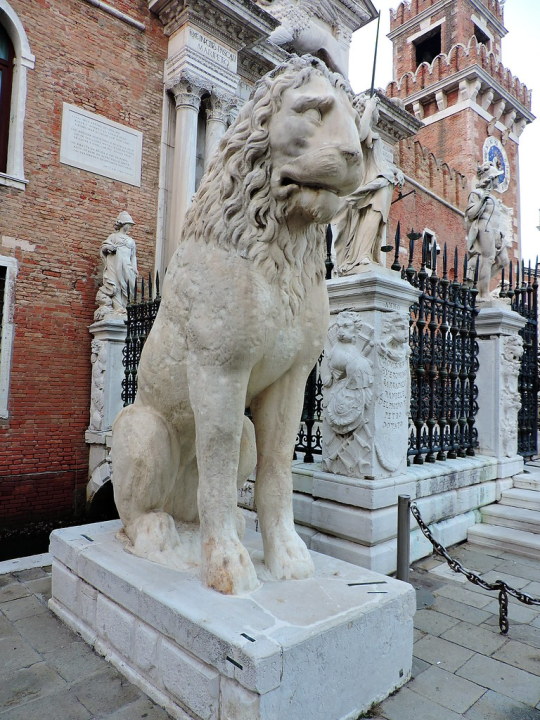
The Parthenon marbles this, the Parthenon marbles that...
I don´t know how known the extent of Greek antiquity looting by West Europeans is to most people or most have a limited image painting the British Museum or Lord Elgin as the sole / main villain.
Here we have the Piraeus Lion (Italian: Leone del Pireo) , one of the four lions decorating the Venetian arsenal in Italy. The prominence of the 3 meter tall lion statue in the port is such that it is also known as Porto Leone ("Lion Port").
We are eternally thankful for the massive courtesy of calling the statue the Piraeus Lion, indicating its origin from Piraeus, the port city of Athens. The statue was sculpted around 360 BC and remained a famous landmark of Piraeus, Athens until 1687.
In 1687, it was looted by Venetian naval commander Francesco Morosini, the man also notoriously responsible for the bombardment of the Parthenon during the wars of the Venetians with the Ottoman Turks, therefore in fact the most irreversible destruction it suffered in its 2,500 year long history. Somehow they were fighting the Turks but it was the Greeks paying for it.
Is it totally and universally acknowledged that Morosini illegally looted this sculpture among so many others? Yes. Does the Piraeus Lion still sit casually in the Venetian port in 2024 as if Venice has a shortage of artefacts to decorate itself with? Also yes. Meanwhile, the Greeks have to limit themselves to a replica in the Piraeus Archaeological Museum.
The Horses of Saint Mark in Venice are also Greek artefacts, this time looted from Constantinople during the crusades, although their original display was in Chios island. Another thing little known is how many ancient and medieval Greek artefacts were looted from the Eastern Roman / Byzantine Empire because people tend to focus on classical antiquities looted in the 19th century.
[Fun fact: The Piraeus Lion has runic inscriptions carved by Swedes in the 11th century. These were either Viking explorers or Varangian mercenaries of the Byzantine Empire.]
#greece#europe#greek culture#ancient greece#western appropriation#crusades#antiquity looting#ancient greek statues#piraeus lion#venice
133 notes
·
View notes
Text






























Jack Lemmon does San Francisco landmarks like Tommy's Joynt, The Brocklebank, The Fairmont Hotel lobby and the Fairmont Venetian Room in the film Good Neighbor Sam (1964)
#the venetian room#the fairmont#san francisco#san francisco filming locations#jack lemmon#david swift#the brocklebank apartments
20 notes
·
View notes
Text
THIS DAY IN GAY HISTORY
based on: The White Crane Institute's 'Gay Wisdom', Gay Birthdays, Gay For Today, Famous GLBT, glbt-Gay Encylopedia, Today in Gay History, Wikipedia, and more … December 11



1475 – Pope Leo X (d.1521), born Giovanni di Lorenzo de' Medici, was the Pope from 1513 to his death in 1521. He was the last non-priest (only a deacon) to be elected Pope. He is known for granting indulgences for those who donated to reconstruct St. Peter's Basilica and his challenging of Martin Luther's 95 Theses. He was the second son of Lorenzo de' Medici, the most famous ruler of the Florentine Republic, and Clarice Orsini. His cousin, Giulio di Giuliano de' Medici, would later succeed him as Pope Clement VII (1523-34).
Several modern historians have concluded that Leo was homosexual. Contemporary tracts and accounts such as that of Francesco Guicciardini have been found to allude to active same-sex relations - alleging Count Ludovico Rangone and Galeotto Malatesta were among his lovers.
Cesare Falconi has examined in particular Leo's infatuation with the Venetian noble Marcantonio Flaminio, with Leo arranging the best education that could be offered for the time. Von Pastor has argued, however, against the credibility of these testimonies, and rejected accusations of immorality as anti-papal polemic. Gucciardini was not resident at the papal court during Leo's pontificate, while other contemporaries such as Matteo Herculano took pains to praise his chastity. Paul Strathern, a British writer and academic, argues that Leo, while homosexual, was not sexually active as pope, despite identifying notable members of that family as such.


Jean Cocteau and Jean Marais
1913 – Jean Marais, French actor (d.1998); Marais was never much of an actor, and it is doubtful he would have achieved international fame had he not become Jean Cocteau's lover, but he was, by universal acclaim, one of the most handsome men ever to appear in films. In the 1940s when he made most of his movies for Cocteau, actors were still slicking down their hair with Kreml and Vitalis. But he changed all that. His cheveaux fous and athletic good looks created a new style of postwar leading man.

Cocteau and Marais
When in 1946 he spent his time in Cocteau's Beauty and the Beast, trapped within an ape-like constume, waiting for Beauty's kiss to turn him once again into Jean Marais, Gay moviegoers around the world secretly wished that they were Josette Day who actually got to kiss the handsome actor's furry face. What is perhaps most interesting about the friendship between Cocteau and Marais is that the actor's face in profile bore an astonishing resemblance to the boys Cocteau had been sketching for thirty years before meeting him.
In the 1960s, he played the famed villain of the Fantômas trilogy. After 1970, Marais's on-screen performances became few and far between, as he preferred concentrating on his stage work. He kept performing on stage until his eighties, also working as a sculptor. In 1985, he was the head of the jury at the 35th Berlin International Film Festival.


1945 – John Preston (d.1994) was an author of gay erotica and an editor of gay nonfiction anthologies.
He grew up in Medfield, Massachusetts, later living in a number of major American cities before settling in Portland, Maine in 1979. A writer of fiction and nonfiction, dealing mostly with issues in gay life, he was a pioneer in the early gay rights movement in Minneapolis. He helped found one of the earliest gay community centers in the United States, edited two newsletters devoted to sexual health, and served as editor of The Advocate in 1975.
He was the author or editor of nearly fifty books, including such erotic landmarks as Mr. Benson and I Once Had a Master and Other Tales of Erotic Love. Other works include Franny, the Queen of Provincetown (first a novel, then adapted for stage), The Big Gay Book: A Man's Survival Guide for the Nineties, Personal Dispatches: Writers Confront AIDS, and Hometowns: Gay Men Write About Where They Belong.
Preston's writing (which he described as pornography) was part of a movement in the 1970s and 1980s toward higher literary quality in gay erotic fiction. Preston was an outspoken advocate of the artistic and social worth of erotic writings, delivering a lecture at Harvard University entitled My Life as a Pornographer. The lecture was later published in an essay collection with the same name. The collection includes Preston's thoughts about the gay leather community, to which he belonged.
His writings caused controversy when he was one of several gay and lesbian authors to have their books confiscated at the border by Canada Customs. Testimony regarding the literary merit of his novel I Once Had a Master helped a Vancouver LGBT bookstore, Little Sister's Book and Art Emporium, to partially win a case against Canada Customs in the Canadian Supreme Court in 2000.
Preston also brought gay erotic fiction to mainstream readers by editing the Flesh and the Word anthologies for a major press.
Preston served as a journalist and essayist throughout his life. He wrote news articles for Drummer and other gay magazines, produced a syndicated column on gay life in Maine, and penned a column for Lambda Book Report called "Preston on Publishing." His nonfiction anthologies, which collected essays by himself and others on everyday aspects of gay and lesbian life, won him the Lambda Literary Award and the American Library Association's Stonewall Book Award. He was especially noted for his writings on New England.
In addition, Preston wrote men's adventure novels under the pseudonyms of Mike McCray, Preston MacAdam, and Jack Hilt (pen names that he shared with other authors). Taking what he had learned from authoring those books, he wrote the "Alex Kane" adventure novels about gay characters. These books, which included "Sweet Dreams," "Golden Years," and "Deadly Lies," combined action-story plots with an exploration of issues such as the problems facing gay youth.
Preston was among the first writers to popularize the genre of safe sex stories, editing a safe sex anthology entitled Hot Living in 1985. He helped to found the AIDS Project of Southern Maine. In the late 1980s, he discovered that he himself was HIV positive.
Some of his last essays, found in his nonfiction anthologies and in his posthumous collection Winter's Light, describe his struggle to come emotionally to terms with a disease that had already killed many of his friends and fellow writers.
He died of AIDS complications on April 28, 1994, aged 48, at his home in Portland.


1948 – Alvin Baltrop (d.2004) was a gay African-American photographer who earned fame through his photographs of the Hudson River piers during the 1970s and 1980s.
Baltrop was born in 1948 in the Bronx. He discovered his love of photography in junior high school. Baltrop received no formal art education; older photographers from the neighborhood taught him different techniques and how to develop photos himself.
Baltrop enlisted in the Navy as a medic during the Vietnam War and continued taking photos, mainly of his friends in sexually provocative poses. He built his own developing lab in the sick bay, using medic trays for developing trays. After his time in the Navy, Baltrop worked odd jobs as a street vendor, a jewelry designer, a printer, and a cab driver. Because he wanted to spend more time taking photos at the Hudson River piers, he quit his job as a cab driver to become a self-employed mover. He would park his van at the piers for days at a time, living out of his van to take pictures.
From 1975 through 1986, Baltrop took photographs of the West Side piers, where he was a well-known member of the community. Baltrop knew every person he photographed, and people often volunteered to be photographed. Younger boys and men at the piers often confided in him about their sexual orientation, their relationships with their families, their housing status, and their work.
Baltrop captured the gay cruising spots and hookup culture that existed in New York City before the AIDS epidemic. Baltrop's photographs not only captured human personalities, but also the aesthetics of the dilapidated piers. His life work is a snapshot of gay, African-American, and New York City history.
Baltrop struggled to make his way in the art world, facing racism from the white gay art world. Gay curators often rejected his work, accused him of stealing it, or stole his work themselves.

"Three Sailors"
Late during the 1990s, NYC artist John Drury, who knew Alvin from their shared neighborhood - Drury living on Third Street, with his wife and Baltrop on Second Street, in lower Manhattan - befriended the artist and recognized the photographers unique abilities, nominating him for a Louis Comfort Tiffany Foundation Award for the Arts. Alvin Baltrop had few exhibits in his lifetime; his work gaining international fame only after his death.
According to one journalist, Baltrop came out as gay at fourteen years old. Baltrop had long term relationships with men and women, but preferred identifying as gay.
Baltrop was diagnosed with cancer in the 1990s. Impoverished and without health insurance, curators and filmmakers attempted to exploit him for their own financial gain. He died on February 1, 2004


1990 – Nakshatra Bagwe, born in Mumbai, India, is an Indian actor and award winning film maker. Nakshatra will be making his Indian feature film debut in My Son is Gay and is due for his international film debut as the lead actor of Hearts. His films Logging Out, Book of Love, Curtains and PR (Public Relations) represent the current LGBT scenario of India.
He is a LGBT rights activist and also an organiser of Gujarat's first ever pride march. Nakshatra has participated in several Pride Parades in India. He won KASHISH – Mumbai International Queer Film Festival in 2012 for his debut film Logging Out. It was screened at prestigious venues like Queens Museum of Arts (New York), The Old Cinema (London) and it was also a part of Queer India European tour 2012 to raise awareness about LGBT issues in the Indian context.
Nakshatra hails from Konkan coastal region. Masure, Malvan is his native village. He takes part in homosexuality awareness projects. Nakshatra and his mother were featured in a promo of popular Indian television show Satyamev Jayte. He came out to society when he participated in Asia’s first LGBT flashmob. He also participated in second queer flashmob which happened at Dadar station, Mumbai. Nakshatra posed nude for a campaign named 'Breaking Closets'.
In July 2014, He became the brand ambassador of Moovz, a global social network for gay men. Nakshatra is first and only openly Indian LGBT person to be signed up as the brand ambassador by any brand till now.


1998 – At a meeting of the American Psychiatric Association in Denver, a resolution was passed rejecting reparative therapy. It stated that attempts to change a person's sexual orientation can cause depression, anxiety, and self-destructive behaviour. A similar resolution was passed by the American Psychological Association in August 1997. Dr. Nada Stotland, head of the association's public affairs committee, told the Denver Post that the very existence of reparative therapy spreads the idea that homosexuality is a disease or evil and has a dehumanizing effect resulting in an increase in discrimination, harassment, and violence against gays, lesbians, and bisexuals.


11 notes
·
View notes
Text









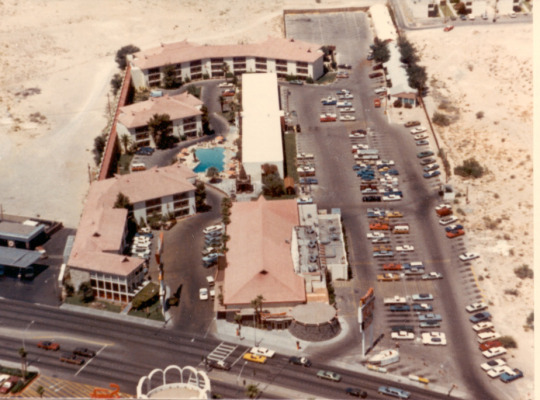
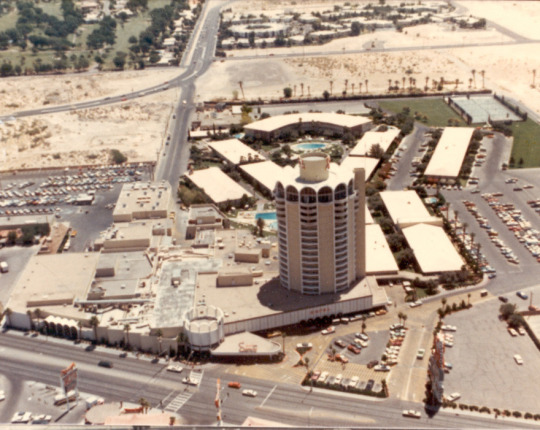









Las Vegas Strip, Summer 1975. Aerial photos of major Strip properties from “Proposal for the Xanadu Hotel and Casino,” Martin Stern Jr. AIA Architect & Associates. Julius Shulman, photographer.
Hacienda (demolished, now Mandalay Bay) Tropicana Marina (now MGM Grand) Aladdin (demolished, Planet Hollywood) MGM Grand (Horseshoe Las Vegas) Dunes (demolished, Bellagio) Flamingo Caesars Palace Holiday (Harrahs) Castaways (demolished, The Mirage) Sands (demolished, The Venetian) Frontier (demolished) Desert Inn (demolished, Encore & Wynn) Stardust (demolished, Resorts World) Riviera (demolished) Thunderbird (demolished, Fontainebleau site) Circus Circus Sahara Landmark (demolished, Convention Center) Las Vegas Hilton (Westgate)
122 notes
·
View notes
Note
Sidney Meier's Pirates, who passed away in 1986, will be adding the first known South Slavs to his seventh uiless civilization game. How do you feel about this landmark feat of representation?
idk shit about your vidya, anon, but on the topic of South Slavic pirates: did you know that the Croatian Navy, to my endless delight, celebrates its day on September 18th in commemoration of the victory of Narentine pirates over the forces of Doge Pietro I Candiano, which momentarily put an end to Venetian attempts at squashing Slavic piracy in southern Croatia?
As soon as he became Doge, [Pietro] advanced with a fleet of twelve galleys to the port of Makarska (Italian: Mokro), where he sank five Narentine ships. He landed near Mokro and advanced deeper inland, but the Narentines crushed his forces, killing him in open battle on 18 September 887. [...] Following his death, the Venetians began to pay prince Branimir of Croatia (879–892) an annual tribute for the right to travel and trade in the Croatian part of the Adriatic[.]
2 notes
·
View notes
Text
Encountering Italy and Germany on a Road Trip Through Southern Brazil
The author encountered accordion music and other unexpected delights on a meandering five-day tour through villages with names like Garibaldi and Teutônia.

I had intricately planned my road trip exploring the Italian and German heritage of Rio Grande do Sul, Brazil’s southernmost state, to maximize immigrant cuisine, unsung wineries and villages with charming timber-frame buildings. I’d visit Antônio Prado, the self-proclaimed “most Italian city in Brazil,” drive along rural roads lined with hydrangeas, and explore Gramado, a town whose center this time of year resembles an Epcot version of an Alpine ski town, decked out with Santa statues and massive candy canes.
But while Gramado’s Christmas parade had its charms and Antônio Prado’s nearly 50 landmark buildings were mesmerizing, unexpected encounters would repeatedly steal the show during my five-day adventure.
Take the impromptu concert that started when I pulled my car over one day near a meandering river. A roadside event was clearly winding down — a woman wiped down a long table, a few stragglers drank beer by a makeshift bar, and a handful of kids splashed in the water. A friendly man told me I had just missed a party celebrating the opening of a bridge to replace the one that had been damaged by tragic floods in May.
As I explained in Portuguese that I wanted to learn “about the immigrant traditions of the region,” a man grabbed an accordion and gathered members of his musical group — Grupo Náni, slogan: “Keeping Italian Cultures Alive” — to belt out “La Bella Polenta,” an immigrant ode to a cornmeal dish with origins in the Italian province of Veneto. The town mayor, one of the dillydallying drinkers, joined in too, and all were singing in Talian, a language that evolved from Venetian and other Italian dialects that their ancestors brought to this region of Brazil more than 100 years ago.
I live in Brazil, and have done the big tourist hits — Carnival in Rio, a cruise on the Amazon, the jaguars of the Pantanal. But pockets of immigrant cultures have always sparked my interest, and I had never experienced the vibrant European traditions that began with 19th-century migration and are still found in the Serra Gaúcha and the neighboring Taquari River Valley.
Continue reading.
2 notes
·
View notes
Text
Europe Tour: Let's go With Us.
Europe Tour: Amsterdam, Paris, Switzerland, Venice, Florence, and Rome

European memories past some of the most iconic cities of the continent, from quaint canals in Amsterdam to eternal romance in Paris, via the grand Swiss Alps, the bewitching beauty of Venice, and on to the ancient wonders of Florence and Rome. Each of these destinations comes with a different feel of European culture, history, and charm.

1. Day 1–2: Amsterdam, The Netherlands
Start your European journey in Amsterdam, a city known for its picturesque canals, world-class museums, and vibrant culture: Things to Do:
Rijksmuseum & Van Gogh Museum: To finally see the masterworks of the Dutch and breathtaking works of Van Gogh.

Canal Cruise: Take a boat tour and enjoy the architectural beauty of Amsterdam.

Jordaan District: Walk down narrow streets lined with boutique shops, cafes, and art galleries.

Vondelpark: Take a break in the most famous park of the city.

2. Day 3–4: Paris, France
Next stop: Paris, the City of Lights! From its iconic landmarks to rich history, Paris is a must-see. Things to Do:
Eiffel Tower: Go up and enjoy the arresting panoramic views of the city.

Louvre Museum-home to the Mona Lisa and thousands of other famous world-renowned works of art.

Notre Dame & Sainte-Chapelle: Be amazed by these Gothic masterpieces with their breathtaking stained glass.

Champs-Élysées & Arc de Triomphe: This is a walk down the most famous avenue, culminating in visiting this national symbol.

3. Day 5–6: Switzerland (Zurich & Lucerne)
Switzerland offers stunning natural beauty with its majestic mountains and clear lakes. Begin with Zurich before heading to Lucerne for the quintessential Swiss experience. Things to Do:
Zurich: A walk through Old Town, a boat ride on Lake Zurich, or visit the Swiss National Museum.

Lucerne: Walk across the Chapel Bridge with a view toward the Swiss Alps.

Pilatus or Rigi Mountain: Take a day trip up either of these two close mountains for hiking or a cable car ride.

Interlaken & Jungfrau: Still thirsty for more alpine adventures, head to the Top of Europe for its panoramic views and snow sports.

4. Day 7–8: Venice, Italy
From Switzerland, fly or take a train to Venice, one of the most romantic cities in Europe. Things to Do:
St. Mark's Basilica: Look in wonder at the mosaics and the architectural beauty of this location.

Grand Canal & Rialto Bridge: A gondola ride or Vaporetto up the famous canal.

Doge's Palace: Go for a tour around this historic seat of the Venetian power.

Burano & Murano: See these colorful islands known for lace making and blowing during this excursion.

5.Day 9–10: Florence, Italy
Florence, the heart of Tuscany and the cradle of the Renaissance, will captivate art and history lovers. Things to Do:
Uffizi Gallery & Accademia Gallery: Marvel at the works from Michelangelo, Botticelli, and da Vinci.

Duomo & Giotto's Bell Tower: Climb to the top for sweeping views of Florence.

Ponte Vecchio: Cross this iconic bridge known for its jewelry shops.

Piazzale Michelangelo: Enjoy the view while the sun is setting in Florence.

6. Day 11-12: Rome, Italy
Your journey ends in Rome, the Eternal City. History comes alive with ancient ruins, grand monuments, and Renaissance art. Things to Do:
Colosseum & Roman Forum: Travel back in time to ancient Rome and just envision those gladiatorial combats.

Pantheon: See this ancient temple dedicated to all gods.

Trevi Fountain: It permits people, according to its tradition, to throw a coin into the water for good luck and in order not to forget their return to Rome.

Travel Tips:
Trains: Europe has a very intensive web of trains; hence, it is the best way to travel, especially between big cities.
Flights: Budget airlines can be a good option to travel greater distances, such as from Switzerland to Venice.
Currency: All listed destinations use the Euro except Switzerland, which uses the Swiss Franc as official currency.
Packing: An individual will need comfortable shoes when touring cities like Paris and Rome, which include lots of walking.
Book Now Your Trip With Us! Contact Us:- +91 9818 78115, Visit Form Link.
This itinerary gives you the perfect blend of vibrant cities, historical wonders, and stunning landscapes. Enjoy your European adventure!

#explore#travel#vacation#trip#adventure#bucketlist#family#friends#fun#memories#europe#italy#rome#amsterdam#paris france#switzerland#venice
2 notes
·
View notes
Text
Heart stopping beauty of Sycamore Gap bought to life by ‘Heartwood’: An exhibition of five tree prints created from a disc of the felled tree’s trunk

'Spirituality' is one of five Heartwood exhibition prints created from a disc of the felled Sycamore Gap tree by printmaker Shona Branigan | © National Trust Images/The House of Hues
A collection of five bespoke tree prints entitled ‘Heartwood’, created from an approx. 90cm diameter disc of the trunk of the felled iconic Sycamore Gap tree, will go on public display today [Monday 15 July].
The National Trust approached printmaker Shona Branigan, known for her detailed and evocative tree prints, to create the commemorative artworks that will be exhibited at four locations along the span of Hadrian’s Wall.
The fallen tree, which towered 50-foot above Hadrian’s Wall before it was felled last September, was removed from site and has been looked after by the National Trust in a safe location while the charity works with its various partners and artists to ensure there is an enduring legacy of the tree informed by the huge public response to its loss.
Five prints are to be displayed at four locations: Newcastle City Library, Hexham Abbey – which will host two prints - Housesteads visitor centre on Hadrian’s Wall and Carlisle Tourist Information Centre. All venues are publicly accessible and free to enter.
The exhibition will run until 1 September 2024 before all five prints will go on display together at The Queen’s Hall, Hexham, from 6 September until 19 October 2024.
Individually themed, named and coloured, the giant tree prints show every tree ring, groove and detail from the cross-section of the almost heart shaped trunk of the 200-year-old tree.
Funded by North East Combined Authority and developed in collaboration with the National Trust, Northumberland National Park Authority, Hadrian’s Wall Partnership and Historic England, ‘Heartwood’ is the first official artistic response created in memory of the much-loved fallen Northumberland tree.
Following the unprecedented public response and outpouring of emotion to the tree’s felling last September, the organisations have together developed a programme of legacy work from the thousands of suggestions for ways in which to remember the historical landmark.
Through three emerging themes, ‘Nature Response’, ‘Space for Reflection’, and ‘Artistic Response’, people will be encouraged to connect, reflect and remember the iconic tree in positive and meaningful ways.
More details will be shared in the coming months as it approaches one year on from the felling of the Sycamore Gap tree and will include engagement work with local schools, tree planting initiatives in the North East, digital legacies and further artistic interpretations.

A close up of 'History', one of five Heartwood exhibition prints created from a disc of the felled Sycamore Gap tree by printmaker Shona Branigan | © National Trust Images/The House of Hues
“Heartwood will be a space for just that, for people to respond and engage with Shona’s exceptionally beautiful artworks that capture the very essence, the ‘heart’ of the treasured tree.”
Printmaker Shona Branigan worked from her studio in Grizedale Forest using traditional methods and materials to create the delicately detailed set of hand burnished relief prints from the precious disc of sycamore wood.
Each ‘Heartwood’ print has unique depth, context and colourways, with names linked to the Sycamore Gap tree and its historic location. ‘Knowledge’ is gold ink; ‘Spirituality’ is blue, ultramarine ink, with iridescent electric blue, purple and hansa yellow watercolours; ‘Landscape’ is burnt umber ink with sap green and yellow ochre watercolour; ‘History’ is Venetian red ink and hansa yellow deep watercolour.
The fifth print, ‘Access’ is hand pressed onto heritage rag paper without ink in a process called Blind Embossing, presenting a tactile experience, inviting touch along the rings of the tree.
Shona Branigan said: "It is with wood printing specifically that my fascination with trees and their lives in the landscape is expressed. I felt privileged to be asked to print Sycamore Gap, and I also felt a responsibility to do my best so that I could honour not only the tree itself but all the people who loved the tree too. As a north easterner I have known Sycamore Gap all my life and visited regularly, the tree was such a haven in the wild landscape.
“The actual process of printing the Sycamore gap has been epic. It's a really big piece and a slow process due to it all being done by hand, first creating a printable surface from the rough wood, then applying traditional inks, before beginning the slow process of printing using a bone folder tool so that I can reach every nuance of the surface. The paper is laid on top and becomes embossed with the 3D shape of the wood and tree rings, which are the embodiment of the landscape in tree cellular form. It's taken several hours, and my muscles are definitely aching after the effort - but, now that the series of prints are complete, I am pleased and proud of my work.
“It's a testament to the tree, to the life of that tree and the lives of other trees to see, to work with it, to see its life, to appreciate it."
For a number of years, Shona volunteered in the press room at Cherryburn, the Northumbrian farmstead cared for by the National Trust and the birthplace of Thomas Bewick, world-renowned wood engraver and naturalist, where she learned traditional printmaking techniques. Her extensive knowledge and experience of working with wood printing was what led the charity to approach Shona to develop the meaningful artistic response.
North East Mayor Kim McGuinness added: “Our iconic tree can never be replaced but this beautiful artwork allows its memory to live on.
“The loss of the Sycamore Gap tree was a devastating moment for me and for so many others across the region and the world. I’m so pleased that something positive can come from this and that communities have been part of developing the exhibition.”
The National Trust is currently working with Shona to produce a special ‘Heartwood’ related print to go on sale in due course. Details on how to purchase a print will be announced by the National Trust on social media later in the year.
2 notes
·
View notes
Text

Doge's Palace is a palace built in Venetian Gothic style, and one of the main landmarks of the city of Venice in northern Italy - Explore petrus.agricola's photos on Flickr.
3 notes
·
View notes
Photo

Strolling through a flooded Piazza San Marco in Venice, people navigate the waters with an almost surreal calm. The historic architecture looms gracefully above, witnessing nature's whimsical play on this 'interesting day'.
#Venice#Piazza San Marco#Flood#High Water#Italy#Travel#Architecture#Surreal#Tourists#Acqua Alta#Nature#Urban Photography#Travel Photography#Historic Landmarks#Venetian Life
16 notes
·
View notes
Photo


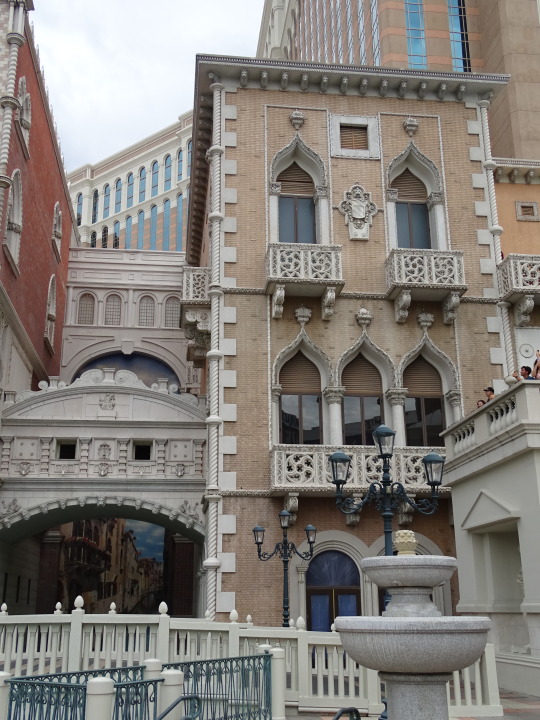

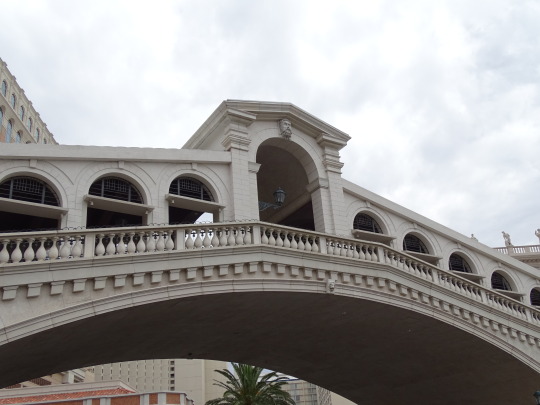


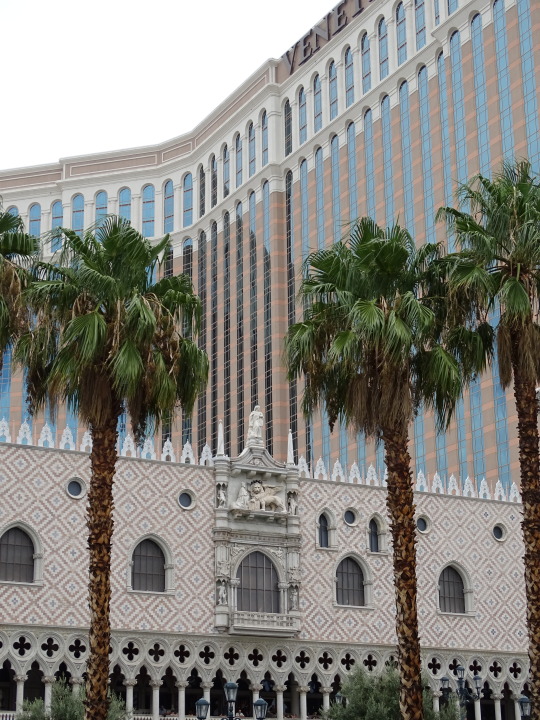


The Venetian Las Vegas opened on May 3, 1999.
#The Venetian Las Vegas#opened#3 May 1999#anniversary#US history#3355 South Las Vegas Boulevard#Paradise#Nevada#summer 2022#USA#interior#exterior#replica#tourist attraction#landmark#cityscape#vacation#travel#Western USA#KlingStubbins#original photography#Rialto Bridge#water#St. Mark's Campanile#Grand Canal Shoppes#Palazzo Ducale
9 notes
·
View notes
Text
Brazil 🇧🇷
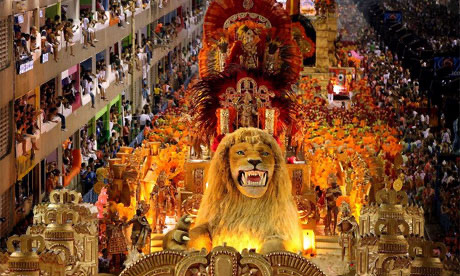
Tradition
Carnaval is a wild celebration of food, alcohol, music and fun. It's held annually for a few days before the start of Lent, the 40-day period of fasting, abstinence and repentance that's observed by the Roman Catholic Church before Easter. The word carnival comes from the Latin carne vale, or "farewell to the flesh"
The Portuguese brought the practice of Carnival to Brazil around 1850, patterning it mainly on the Parisian tradition of holding masquerade parties and balls at this time of the year. However, the Brazilians morphed it into a version uniquely their own over time, adding in elements from the people's African and indigenous cultural backgrounds.

Thus, Carnival in Brazil eventually incorporated lots of parades, elaborate costumes, music, dancing and balls. A tradition also developed where people dress up in opposing roles: men dress as women, aristocrats dress as commoners, the poor dress as the rich.
Carnival is held all over the country; celebrations differ a bit by region, but Rio de Janeiro's celebration is the most popular, drawing crowds of 500,000 foreigners annually from across the globe.
While all Brazilians love Carnival, the black communities are its most avid participants. This likely stems from the community's historical love of Carnival, as African slaves were freed annually for the festival's duration.
Traditional outfits

People wear the same types of clothes in many places of the world. Jeans and T-shirts are worn in most countries, replacing traditional garments. But for special occasions or celebrations, some people choose to bring back the memories of the past by wearing a traditional costume. While they don't wear it every day, Brazilians care about their traditional clothing and wear it for different occasions, such as carnivals or national celebrations.
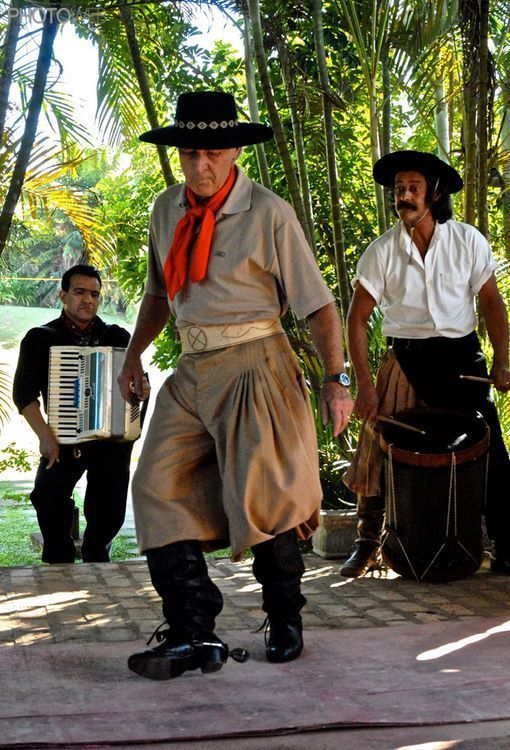
In general, Brazilians wear clothing that's comfortable yet richly colored and sophisticated. However, there are some preferred clothing types depending on region.
For example, those living in the southern plains, a ranching area, wear gaucho-type clothing: baggy pants, or bombachas; cowboy hats and cowboy boots.
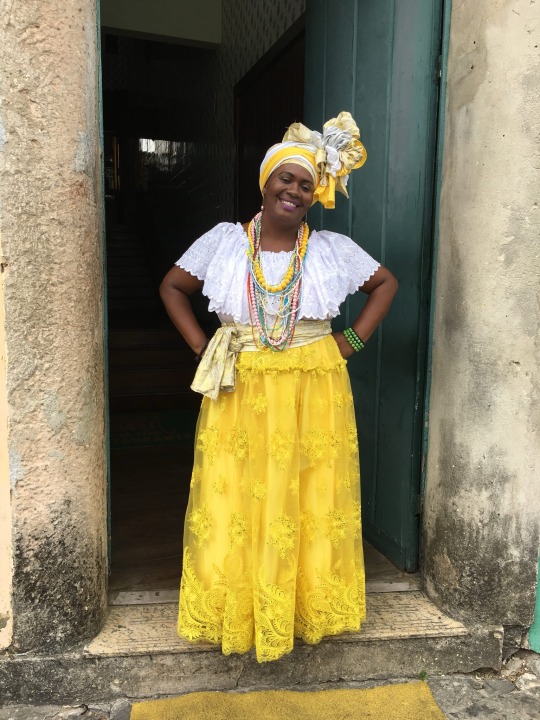

People in the country's northeastern Bahia region, which is heavily influenced by African culture, don long skirts, head scarves and shawls. Items adorned with bordado richelieu -- a type of lace developed in 18th-century France to mimic white Venetian lace, which was brought to Brazil by the Portuguese -- are also popular
Another way to consider Brazilian clothing is country attire versus city attire. Those who live in the country tend to wear shirts, jeans or dresses crafted from an inexpensive cotton material. Women who reside in the city often like to wear short skirts and dresses, and both sexes of city slickers enjoy that most typical of Western attire: T-shirts and jeans.
Statue of Christ the Redeemer.
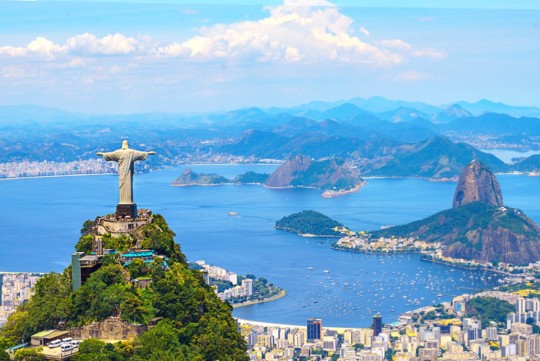
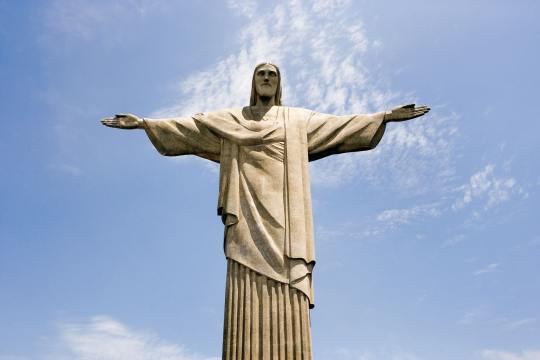
Towering 2,310 feet above the city of Rio, the Christ the Redeemer statue has fascinated experts and historians for nearly a hundred years.
This landmark is must-see in any visit or free tour around Rio, and for good reasons! It’s the fourth largest statue of Jesus Christ in the world, the largest Art Deco-style sculpture on the planet, and to top it all off, in 2007 the statue was deemed as one of the New Seven Wonders of the World along with Machu Picchu, the Great Wall of China and the Roman Colosseum.
Perched on the summit of Mount Corcovado in Rio, the statue stands at a whopping 98 feet (or 30 metres) tall (making it two-thirds the height of New York’s Statue of Liberty), and its outstretched arms reach to 92 feet (or 28 metres) horizontally.
The idea of designing a massive statue of Jesus Christ in Rio first came about way back in the 1850s, when a local priest came up with the idea of placing a Christian monument on top of Mount Corcovado. Apparently he had requested Princess Isabel (the daughter of Emperor Pedro II and Princess Regent of Brazil at the time), to fund the project, but the idea was scrapped after a Declaration of the Republic was declared in Brazil in 1889 – a pinnacle move as it separated the church from the state in the country.
Traditional food

Feijoada.- Brazilian Feijoada is a black bean and pork stew that Brazilians often serve topped with farofa, toasted cassava flour. Many call this comfort food the national dish of Brazil.
Feijoada, a popular Brazilian dish, owes its name to its main ingredient, black beans (feijão). It is a rich stew traditionally made from different parts of the pig, such as feet, ears, and bacon, as well as other smoked meats.

Farofa.- farofa is particularly popular, typical recipes call for raw cassava flour to be toasted with abundant butter, vegetable oil or olive oil, salt, bacon, onions, garlic, sausage, or olives until golden brown.
Farofa is served alongside the main course and can either be sprinkled on by individual diners to their taste before eating, or eaten as an accompaniment in its own right, as rice is often consumed

Moqueca de Camarão.- Brazilian prawn coconut stew (moqueca de camarao) is an easy and delicious low-carb recipe that features a unique combination of spices.
As with many recipes of this kind, you'll find lots of variations for moqueca de camarao, but all of them are loaded with prawns, tomatoes, chillies, garlic, coconut milk, and lime juice.
Vatapá- Brazilian dish made from bread, shrimp, coconut milk, finely ground peanuts and palm oil mashed into a creamy paste. It is a typical food of Salvador, Bahia and it is also common to the North and Northeast regions of Brazil
Acarajé-The crispy bean and onion cakes (acarajé) are stuffed with a flavourful vatapá - a popular Brazillian mix of shrimp, crab, nuts and coconut milk.
Dixon, R. (2018). What Are Some Traditional Clothes Brazilians Wear? | Synonym. [online] Synonym.com. Available at: https://classroom.synonym.com/what-are-some-traditional-clothes-brazilians-wear-12079370.html.
[email protected] (2023). The Story Behind Rio’s Christ the Redeemer Statue | Strawberry Tours. [online] ONEPORT. Available at: https://strawberrytours.com/the-story-behind-rio-s-christ-the-redeemer-statue.
3 notes
·
View notes
Text


Pałaso Dogal | Venezia, Veneto.
Information:
Built in the 7th century and reconstructed in the 13th century, this Venetian Gothic landmark features small columned loggias, tracery with quatrefoil openings, ogge arches, and reliefs from capping ornaments to ropework.
Venetian Gothic architecture borrows aesthetics from Byzantine and Islamic architectures. Another design similar to Doge's Palace is the Ca' d'Oro, also found in Venice, Italy.
Photo Credits:
"L'Arcangelo Gabriele annunziante, sull'angolo di Palazzo ducale a Venezia adiacente alla Porta della Carta" by Giovanni Dall'Orto, taken 30th July 2008.
"Venezia , Veneto" by Kaz Ish, taken 12th July 2012.
#Italian#Italy#Venice#Venezia#Italia#Gothic#architecture#Venetian Gothic Architecture#italian architecture#venice architecture#history#doge's palace#venetian gothic
9 notes
·
View notes